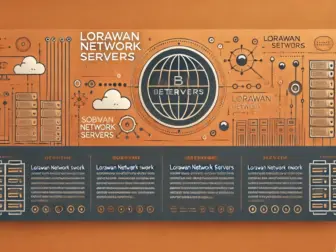Tag - LoRaWAN
Blog , March 3, 2024 , ChirpStack, Device management, iot, LoRaWAN, LoRaWAN Base Station, LoRaWAN Gateway, LoRaWAN Network Server, LPWN, Network Server, The Things Network, TTN
Exploring LoRaWAN Technology: The Key to Unlocking Long-Range, Low-Power IoT Connectivity
Exploring LoRaWAN Technology: The Key to Unlocking Long-Range, Low-Power IoT Connectivity
The Internet of Things (IoT) is an ever-expanding universe of interconnected devices, and at the heart of its growth is the need for efficient, long-range communication technologies that can operate on low power. Enter LoRaWAN (Long Range Wide Area Network), a protocol designed to meet these exact requirements, providing a balance between range, battery life, and operational cost that makes it ideal for a myriad of IoT applications.
LoRaWAN operates in the sub-gigahertz radio frequency bands, such as 868 MHz in Europe and 915 MHz in North America. This allows it to achieve communication ranges of up to 15-20 kilometers in rural areas and 2-5 kilometers in urban settings, a significant improvement over traditional Wi-Fi and Bluetooth technologies. This is partially due to its use of LoRa modulation, which employs chirp spread spectrum technology known for its resilience to interference and capacity to maintain high sensitivity over long distances.
One of the defining features of LoRaWAN is its adaptive data rate (ADR), which optimizes communication for each device based on its signal quality and network conditions. This ensures that devices use the least amount of power while maintaining a reliable connection. As a result, devices on a LoRaWAN network can run on battery power for several years, making the technology perfect for applications where frequent battery changes are not practical, such as in agricultural sensors or urban infrastructure monitoring.
In terms of network architecture, LoRaWAN employs a star-of-stars topology. Devices, known as nodes, communicate with gateways, which then relay messages to a central network server. The gateways are transparent bridges that pass messages between the nodes and the server where the actual processing is done. This approach simplifies the deployment of nodes and reduces their required complexity and cost.
Security is also a priority with LoRaWAN. It supports end-to-end encryption using Advanced Encryption Standard (AES) keys, ensuring that the data remains secure from the node to the application server. Each node has a unique set of keys, safeguarding the network from unauthorized access and protecting the integrity of the transmitted data.
LoRaWAN is managed by the LoRa Alliance, a non-profit association that promotes the standardization of the protocol to ensure interoperability between different manufacturers’ devices. This standardization is critical for the expansion of IoT, as it allows for a diverse ecosystem of products and services that can work seamlessly together.
Despite its many benefits, LoRaWAN is not without its drawbacks. The protocol is designed for low-power, low-data-rate applications and may not be suitable for use cases requiring high bandwidth or real-time communication, such as video streaming. Additionally, the widespread deployment of LoRaWAN infrastructure is still ongoing, and coverage may be limited in some areas.
However, for many IoT applications, the advantages of LoRaWAN make it an attractive choice. It’s being used in a growing number of sectors, including smart cities, where it can help manage street lighting, waste collection, and parking. In agriculture, it enables farmers to monitor soil moisture and weather conditions to optimize crop yields. It’s also found in utility metering, wildlife tracking, and smart home devices.
In conclusion, LoRaWAN is a cornerstone technology for the IoT, providing the long-range, low-power connectivity that is essential for connecting the vast array of devices that make up our increasingly smart world. As the IoT continues to evolve, LoRaWAN is poised to play a pivotal role in enabling the smart, connected solutions that will drive innovation and efficiency in countless industries.


